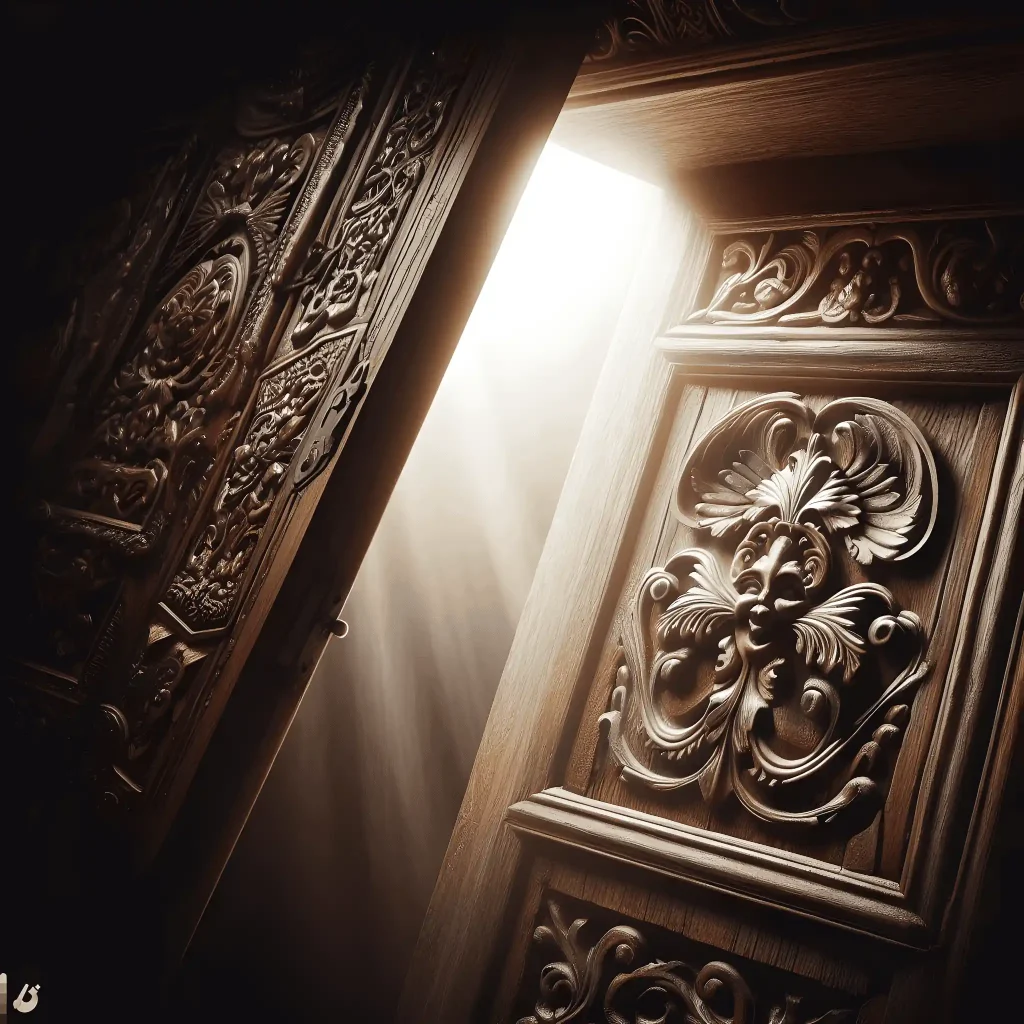Beneath the familiar surface of our world, in the hushed and shadowed corners of history, thrive the enigmatic entities known as occult societies. These secret organizations, skirting the edge of public awareness, have ensnared both the minds and nightmares of humankind for untold generations. Entangled in arcane rituals and bound by cryptic codes, these esoteric groups have etched a silent saga into the very essence of our cultural heritage.
Yet, what arcane truths lurk behind the shrouded facades of these clandestine orders? From the labyrinthine rites of the Freemasons to the otherworldly incantations of the Rosicrucians, the magnetism of these secret societies is as profound as the secrets they guard. As we dare to lift the obsidian curtain on their enshrouded worlds, we venture into a liminal space—a realm betwixt daylight and darkness, revelation and obscurity.
In the present day, the echoes of these occult societies resonate far beyond the antiquated tomes and hallowed halls of yesteryear. They pulse through the lifeblood of our pop culture, casting their arcane shadows across silver screens, spilling out from the pages of dog-eared novels, and igniting the digital whispers of online enclaves. Here, fact and folklore entwine, blurring the lines of reality.
Embark with me, kindred spirits, as we traverse the veiled passageways of antiquity, unearthing the profound influence and clandestine chronicles of the globe’s most inscrutable congregations. Our odyssey commences, a journey through the labyrinthine heart of the secret world of occult societies—each hushed incantation, each veiled emblem, a narrative yearning for the light of discovery.
The Arcane Lineage of Occult Societies
Exploring the Ancient Roots and Evolution of Secret Organizations
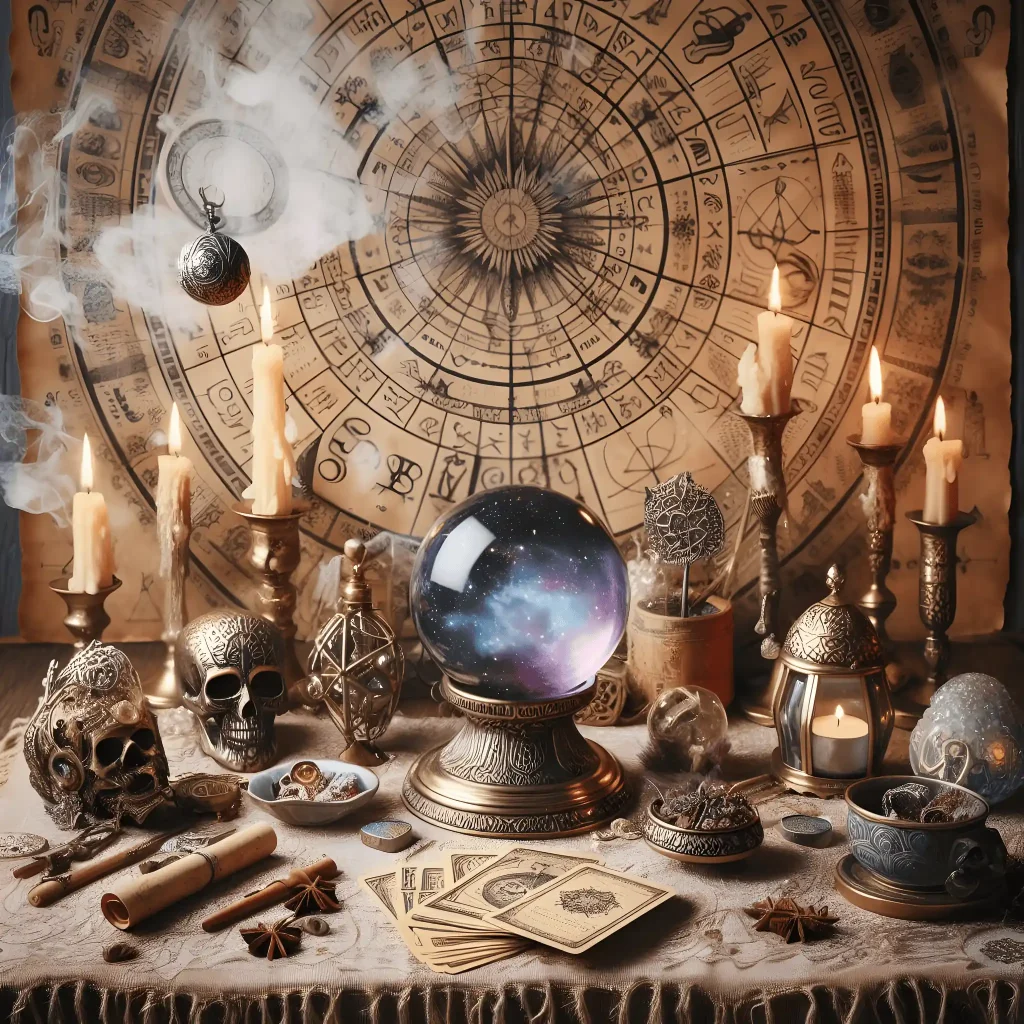
The annals of history are rich with whispers of secret societies, those guardians of forbidden knowledge who operate just beyond the veil of the ordinary. Occult societies, the storied collectives bound by their pursuit of the esoteric, have existed since the dawn of civilization. These enigmatic organizations have often been the unseen architects, weaving the threads of mystical influence through the fabric of societal development.
In ancient times, mystery schools like the Eleusinian Mysteries promised initiates a deeper understanding of life and the cosmos through sacred rites. As centuries unfolded, the tradition of secret knowledge persisted, evolving into complex networks of esoteric groups with diverse agendas and philosophies.
The Middle Ages saw the rise of alchemical brotherhoods, which pursued the transmutation of base metals into gold—a metaphor for spiritual enlightenment. With the Renaissance came a resurgence in hermetic philosophy and the birth of new societies like the Rosicrucians, who claimed to hold the wisdom of a bygone age, offering a blend of science, mysticism, and religion.
Fast forward to the Age of Enlightenment, and we encounter the Freemasons—a name synonymous with secret organizations. Originating from the local fraternities of stonemasons, the Freemasons expanded into a vast and intricate society with its own symbols, rituals, and degrees of initiation. Their influence reached the pinnacles of power, counting among their ranks founding fathers, royals, and intellectuals.
The 19th and 20th centuries witnessed the flourish of occult revivalism, bringing forth groups like the Hermetic Order of the Golden Dawn, which sought to unlock the secrets of the divine and the human mind. The Theosophical Society emerged with a mission to build a universal brotherhood without discrimination and to investigate unexplained laws of nature.
Each of these societies, shrouded in their own brand of secrecy, contributed to a tapestry that is as compelling as it is clandestine. The allure of occult societies lies not just in their rituals and symbols but in their enduring quest to understand the profound mysteries of existence. As gatekeepers of arcane wisdom, they challenge our perceptions, inviting us to ponder the possibility of a world far more complex than we might dare to imagine.
It is within the veiled annals of these occult societies that we find the subtle yet indelible influence on the course of human events. While many of these groups have been branded with a brush of infamy, often accused of conspiring to shape world affairs, a closer examination reveals a nuanced narrative where spirituality, science, and philosophy intersect.
From the shadows, these secret organizations have often attracted the minds eager for the profound, the pioneers who would not settle for the surface-level understanding of their reality. The allure of the hidden, the power of the symbol, and the depth of the ritual—these were the currencies of the esoteric groups that promised more than mere mortal experiences.
The Industrial Revolution and the advent of modernity brought new challenges and transformations to these occult societies. Some, like the Freemasons, adapted and thrived, their lodges becoming hubs for social networking and philosophical discourse. Others, more rigid in their arcane doctrines, faded into the periphery, occasionally resurfacing in the public imagination through literature and art.
As the 20th century progressed, the lines between occultism and mainstream spiritual movements began to blur. Organizations like the Ordo Templi Orientis (O.T.O.), which drew inspiration from ceremonial magic and Eastern mysticism, influenced notable figures in art and culture, further embedding esoteric motifs into the fabric of society.
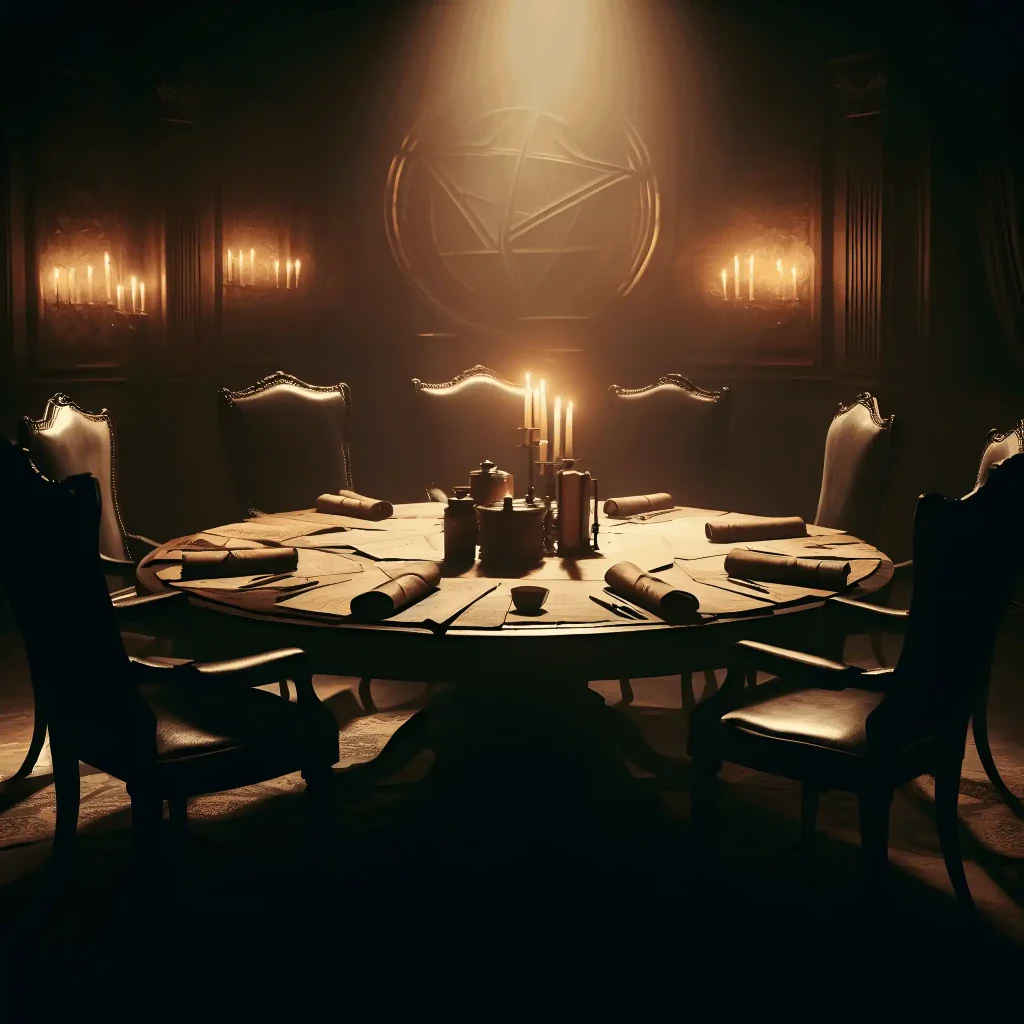
In tracing the lineage of these secret societies, one cannot ignore their impact on cultural and political landscapes. From the mystical Kabbalistic interpretations of the Jewish tradition to the Gnostic currents that wound through early Christian thought, occult societies have been a silent partner in the evolution of religious and esoteric thought.
In the present day, the legacy of these organizations lives on, their symbols and philosophies permeated into various aspects of life, from architecture to cinema, from literature to the very way we interpret our world. Their secrets, once guarded by the few, have now become the treasures sought by the many, fueling a contemporary resurgence in the interest of the arcane and the occult.
As we stand at the precipice of this vast and shadowy realm, we must ask ourselves: what lessons can we glean from the enduring mystique of these occult societies? Their history is a testament to the human desire for deeper understanding, a reminder that beyond the known, there is much that remains unseen, waiting for those daring enough to seek it out.
Esoteric Beliefs and Rituals of Secret Societies
Decoding the Mystical Practices of Hidden Esoteric Groups
Venture deeper into the heart of these occult societies, and you’ll discover a world where the mystical and the metaphysical converge. The beliefs and practices of these secret organizations are as varied as the sands of time, yet they all share a common thread—the pursuit of esoteric knowledge and the transformation it promises.
At the core of many occult societies is the belief in an ancient wisdom, a primordial truth that predates conventional religion and science. This perennial philosophy is thought to hold the keys to the universe, offering enlightenment to those who can decode its enigmas. It is a path walked by the initiate, a journey of personal alchemy that seeks to transform the base elements of human existence into spiritual gold.
The practices that embody these beliefs are equally as diverse, ranging from the ceremonial to the contemplative. Rituals, often rich in symbolism and allegory, serve as the backbone of many secret organizations. These rites are meticulously crafted, with every gesture, word, and symbol serving a specific purpose—to align the practitioner with the energies they seek to channel and to facilitate a deeper communion with the unseen forces that govern reality.
Take, for instance, the intricate rites of the Hermetic Order of the Golden Dawn. Members would progress through a series of grades, each one corresponding to a step on the Tree of Life—a Kabbalistic representation of the path to spiritual ascension. These ceremonies were not mere theatrics; they were believed to be transformative experiences, imbuing the participants with a profound understanding of the mystical laws.
Meditation and visualization are other key practices within these groups, tools to sharpen the mind and to explore the inner realms of consciousness. Through disciplined mental exercises, practitioners seek to reach altered states, to glimpse the divine spark within, and to harness their inner potential.
The influence of astrology, alchemy, and divination cannot be overstated in the context of occult beliefs. Many societies hold that the macrocosm is reflected in the microcosm, that the movements of celestial bodies influence the affairs of humanity. Through these ancient arts, members strive to interpret the cosmic signs and to use that knowledge to guide their earthly journey.
Esoteric groups also often embrace a holistic view of health and well-being, incorporating elements of herbalism, energy healing, and other alternative practices. This holistic approach is rooted in the belief that body, mind, and spirit are interconnected and that true wellness can only be achieved when all are in harmony.
In essence, the beliefs and practices of occult societies are a tapestry woven from the threads of the mystical, the philosophical, and the ritualistic. They often espouse a worldview that transcends the material, one that embraces the interconnectedness of all things and the latent power that resides within the human spirit.
Many of these societies also harbor a reverence for nature and the elements, seeing them as manifestations of divine principles. Seasonal ceremonies and celebrations are common, aligning members with the cycles of the Earth and the cosmos. This symbiotic relationship with the natural world underscores a belief in the unity of all existence and a respect for the forces that animate life.
The study and use of sacred geometry is another hallmark of esoteric practices. Occult societies have long been fascinated by the patterns and shapes that form the building blocks of reality. These geometric principles are believed to hold the blueprint of creation, offering insights into the structure of existence and the harmony of the universe.
Members of these groups are often initiates, undergoing a process of induction that symbolizes a rebirth into a higher state of consciousness. The initiation rites serve as a gateway, marking the transition from the uninitiated to the enlightened, from the profane to the sacred. It is within this sanctified space that the adept is exposed to the society’s guarded teachings and begins their true journey.
It’s important to note that these practices are not merely historical artifacts; they continue to thrive in modern occult societies around the world. While the specific rituals and doctrines may vary from group to group, the underlying intent remains steadfast: to tap into a deeper reality and to achieve a state of gnosis, or direct knowledge of the divine.
The secrecy that surrounds these practices is not always born from a desire for exclusion but rather from a respect for the sanctity of the experience. For many adherents, the esoteric path is a deeply personal and transformative journey, one that requires discretion and mindfulness. This reverence for the inner workings of their traditions has often led to misunderstandings and suspicions from the outside world.
Yet, the impact of occult practices has extended far beyond the confines of secret meetings and hushed conversations. They have influenced art, literature, and philosophy, permeating the cultural consciousness with symbols and archetypes that resonate with the human experience. In the icons of Tarot cards, the allegories of alchemical texts, and the motifs found in countless works of fiction, we see the enduring legacy of these mysterious traditions.
Illuminated Figures in the Shadows of Secret Organizations
The Influential Individuals Who Have Shaped Occult Societies
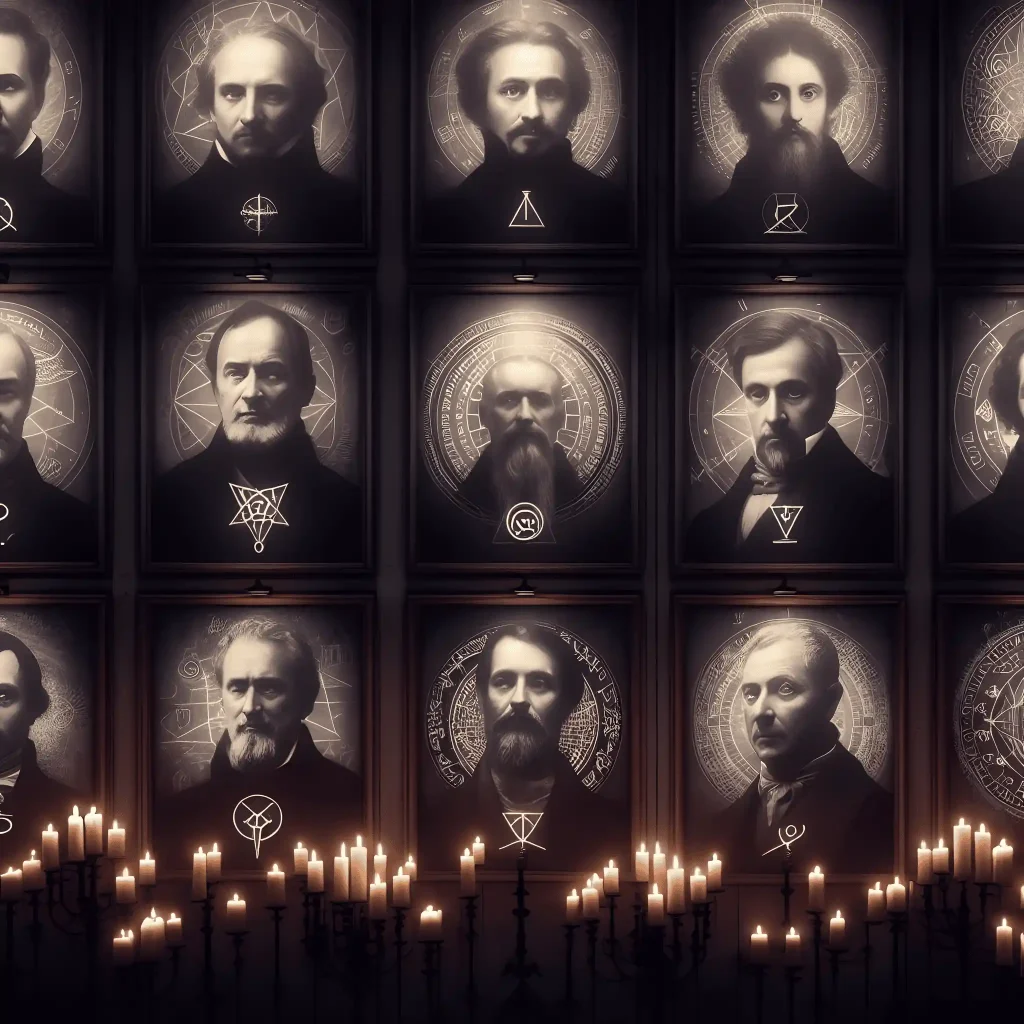
The enigmatic world of occult societies has been a magnet for some of history’s most influential and curious minds. These societies often act as a crucible for the synthesis of ideas, where the intellectual and spiritual elite forge potent connections. The members of these secret organizations have left indelible marks on the world, their contributions spanning the spectrum of human endeavor.
One cannot discuss the intersection of the occult and the influential without mentioning figures such as Aleister Crowley. Dubbed “the wickedest man in the world,” Crowley was a prolific member of the Hermetic Order of the Golden Dawn before establishing his own esoteric group, the Ordo Templi Orientis (O.T.O.). His philosophy of Thelema, with its core tenet “Do what thou wilt,” has left a lasting legacy on modern occultism.
Another luminary of the occult was Eliphas Lévi, a French occult author and ceremonial magician whose works deeply influenced Western esotericism. His writings on magic, the Tarot, and the Kabbalah provided a foundation for many occult societies that followed, including the Golden Dawn and the builders of theosophy, Helena Blavatsky and Henry Steel Olcott, who sought to bridge Eastern and Western spiritual traditions.
The annals of the Freemasons are studded with notable names, from the scientific genius of Sir Isaac Newton to the revolutionary fervor of George Washington. The Masonic lodges provided a fertile ground for discussions that shaped nations and science, their influence echoing through the halls of power and progress.
Occult societies have not solely been the domain of men; women have also played pivotal roles. Dion Fortune, a British occultist and member of the Golden Dawn, authored key texts on mysticism and magic, and she established her own group, the Society of the Inner Light. Her works continue to be vital resources for those studying the esoteric arts.
In the literary world, figures such as William Butler Yeats delved into the occult, with his membership in the Golden Dawn influencing his poetry and prose. The themes of mysticism and the supernatural often wove their way through his works, showing the deep interplay between his artistic and esoteric pursuits.
The allure of the occult also captivated the minds of scientists like Jack Parsons, a pioneer in rocketry and a disciple of Aleister Crowley. Parsons’ forays into the occult were as explosive as his professional endeavors, and his life story is a testament to the strange bedfellows made at the intersection of science and the supernatural.
These notable figures, drawn from diverse backgrounds, shared a common thread: an insatiable thirst for knowledge that lay beyond the ordinary confines of their time. Their association with occult societies provided them a unique lens through which to view the world, one that often challenged the status quo and pushed the boundaries of what was deemed possible.
Another remarkable member of these secretive circles was Manly P. Hall, a Canadian-born author and mystic whose magnum opus, “The Secret Teachings of All Ages,” remains an encyclopedic reference for students of the esoteric. Hall’s work encompasses a wide array of spiritual traditions and symbolisms, reflecting a life dedicated to the study of the world’s hidden teachings.
The impact of these individuals cannot be overstated; their contributions have shaped both the esoteric and exoteric worlds. They have authored influential texts, led movements, and sparked intellectual revolutions. Their legacies are not merely confined to the annals of occult history but are interwoven with the cultural, scientific, and political tapestries of their respective eras.
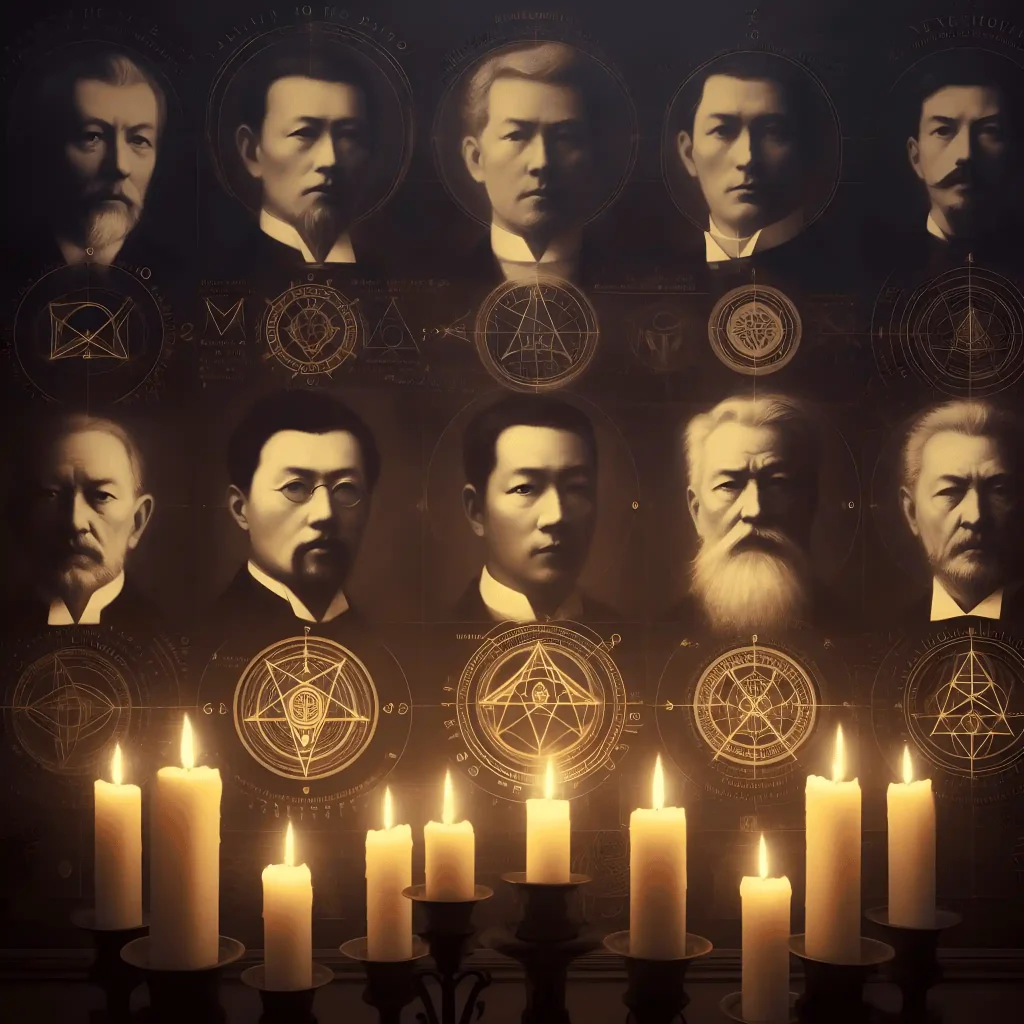
It’s also worth noting that occult societies have often been the subject of speculation regarding their membership. Rumors abound of artists, politicians, and business moguls who are said to be part of these secret organizations, fueling conspiracy theories and public fascination. While some claims may be unfounded, they underscore the enduring curiosity surrounding these groups and their perceived influence.
The role of these notable figures in occult societies often transcends their contributions to the secret knowledge and practices of their orders. They serve as icons, embodiments of the allure and mystery that these societies represent. Their stories—whether shrouded in truth or embellished by myth—continue to inspire those drawn to the esoteric path.
As we reflect on the lives and works of these pivotal members, we begin to understand the magnetic pull of occult societies. They are not simply a gathering of individuals with shared interests but a nexus of transformation where the quest for hidden wisdom can lead to profound personal and societal change. Through their endeavors, we catch glimpses of a world that defies conventional understanding—a world where the arcane becomes tangible and the seeker may become the sage.
The Occult in the Public Eye: Secret Societies and Pop Culture
Tracing the Esoteric Influence on Movies, Books, and Media
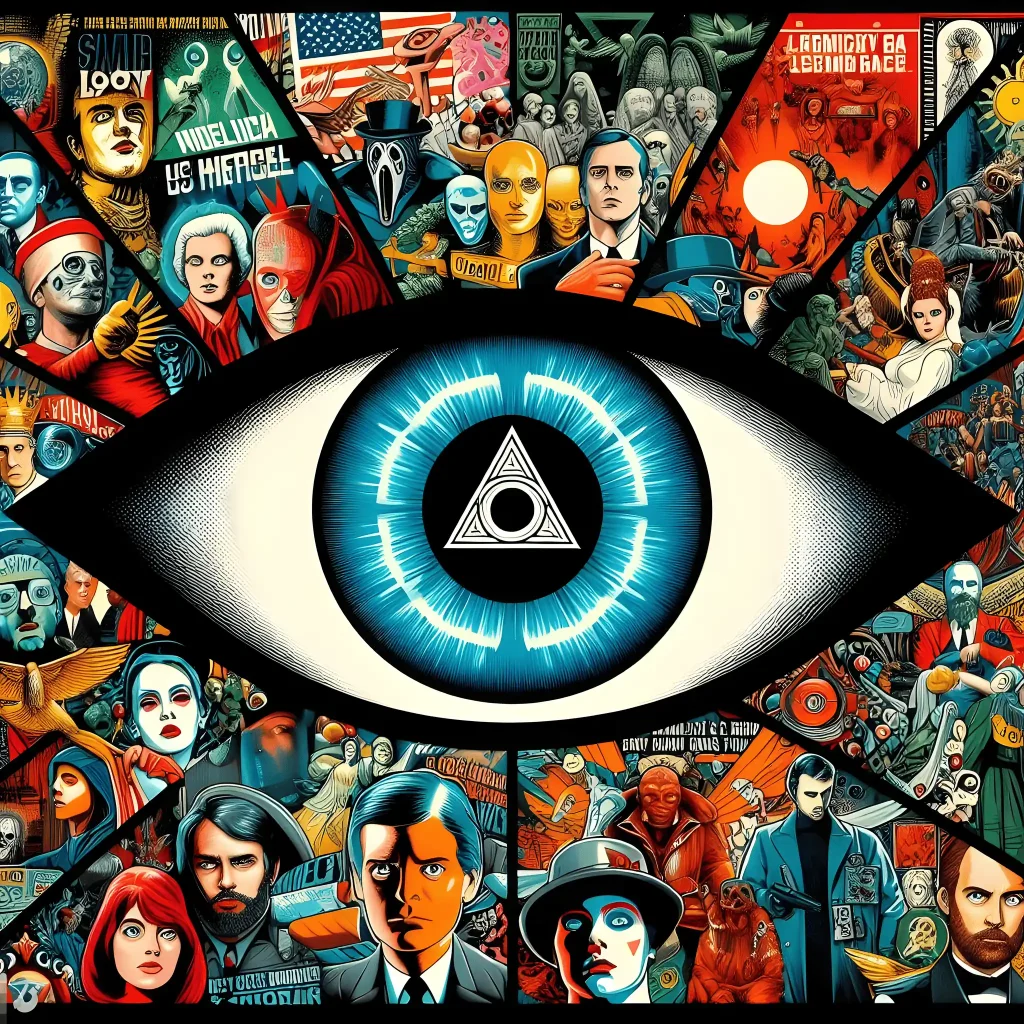
The tendrils of occult societies stretch far beyond their cloistered gatherings, entwining with the very fabric of popular culture. The arcane and the mysterious have always held a certain allure, and this fascination has been reflected and amplified in our movies, books, and art.
Cinema, with its powerful visual storytelling, has long been a medium through which the enigma of secret societies is explored. Films like “Eyes Wide Shut,” “The Da Vinci Code,” and “Rosemary’s Baby” draw upon the themes of hidden knowledge and clandestine rituals, captivating audiences with a blend of intrigue and the forbidden. The portrayal of these societies oscillates between the sinister, often linked to conspiracy and malevolence, and the enlightened, as keepers of ancient wisdom.
The literary world, too, is rife with references to esoteric groups. From the gothic tales of Edgar Allan Poe to the Lovecraftian cosmos, the influence of the occult weaves its way through the fabric of genre fiction. Dan Brown’s Robert Langdon series, perhaps most notably “The Da Vinci Code,” brought secret societies to the forefront of the public’s imagination, blending historical fact with fiction in a way that sparked both controversy and a voracious appetite for more.
Music is not immune to the allure of the esoteric either. The rock band Led Zeppelin, famed for their mystical references and symbolism, drew heavily on occult themes, as did David Bowie, with his otherworldly personas and references to Crowleyan philosophy. These artists, and many others, tapped into the rich vein of occult imagery, using it to craft works that resonate on a level deeper than the mere auditory.
Even in the digital age, the influence of occult societies is palpable. Video games like “Assassin’s Creed” weave historical fact with fiction, inviting players to explore a world where secret organizations battle for control behind the scenes. Online, forums and communities dedicated to the study and discussion of the occult have proliferated, making what was once veiled knowledge accessible to the masses.
The impact of these societies on popular culture can also be seen in the rise of occult fashion. Symbols like the all-seeing eye, the pentagram, and the pyramid, once the secret emblems of esoteric orders, now adorn clothing and jewelry, embraced by a generation that finds beauty in the mystique of the hidden.
This cultural fascination is not without consequence. The portrayal of occult societies in media often blurs the line between reality and fantasy, creating a mystified version of these groups that can sometimes overshadow their true nature. Popular culture tends to sensationalize and dramatize, which can lead to misconceptions about the practices and intentions of real occult societies. Nevertheless, this melding of fact and fiction has also served to keep the interest in these groups alive, inspiring new generations to explore the depths of the esoteric.
Television series like “Penny Dreadful” and “American Horror Story” have introduced viewers to a stylized version of the occult, complete with secret societies and supernatural phenomena. These shows often draw upon historical figures and events, weaving them into narratives that, while not entirely accurate, speak to the human fascination with the mysterious.
The iconography and lore associated with occult societies have also found their way into the world of graphic novels and comics. Alan Moore’s “Promethea” series is a prime example of this, as it delves into the realms of magic and mysticism, drawing heavily from the traditions and symbolism of the occult.
This pervasive presence of the occult in popular culture not only reflects a collective curiosity but also influences it. It shapes how the public perceives these secret organizations, often romanticizing their existence and attributing to them more power and mystery than they may possess in reality.
Despite the embellishments, the cultural artifacts inspired by occult societies often carry with them kernels of truth—philosophical insights, historical connections, and spiritual questions that resonate with those seeking something more substantial than the mundane world offers. These fictional portrayals can act as gateways, leading the curious to delve deeper into the actual teachings and histories of these secretive groups.
The symbiotic relationship between occult societies and popular culture is a dance of shadows and light. As much as these organizations influence the arts, the arts reflect and reinterpret their mysteries, creating a feedback loop that ensures the continued relevance and reinvention of occult themes. In this way, the secret world of occult societies maintains a presence in the collective consciousness, ever enigmatic and enticing to those who are drawn to the allure of the unseen.
As we peel back the layers of their portrayal in popular culture, we are reminded that the true essence of these societies lies not in the dramatized versions we see on screen or in print but in the quieter, more profound search for knowledge and understanding—a search that has beckoned to humanity throughout the ages and continues to do so today.
More Occult in the Movies
As we peel back the layers of the unseen, the occult’s mesmerizing grip on the horror genre becomes undeniably clear. Justin’s insightful piece, “Occult a Mesmerizing Grip on Horror: Did you know?” dives into the heart of this fascination. Tracing the occult’s influence from the silent screams of the 1920s to the chilling tales of 2023, the article reveals how ancient myths, esoteric rituals, and otherworldly powers have shaped the spine-tingling horror we relish on the silver screen.
The occult’s shadow looms large over horror, tapping into our deepest fears and offering filmmakers a treasure trove of dread to draw from. Whether it’s the unsettling notion of possession, the dark allure of witchcraft, or the enigma of arcane rites, these themes strike a chord with our collective psyche, resonating with the thrill-seekers and the paranormally curious alike.
We invite you to explore the dark corridors where the occult and horror intertwine with a sense of real danger and authenticity that only the unknown can provide. Join the conversation and share your own experiences of occult’s influence on the horror films you love. How has this blend of the hidden and the horrific held you captive in its eerie embrace? Share your thoughts and join us in this exploration of the Occult in Horror Movies on HorrorFacts.com.
The Digital Age of Esoteric Orders
Navigating the Modern Landscape of Occult Societies and Secret Organizations
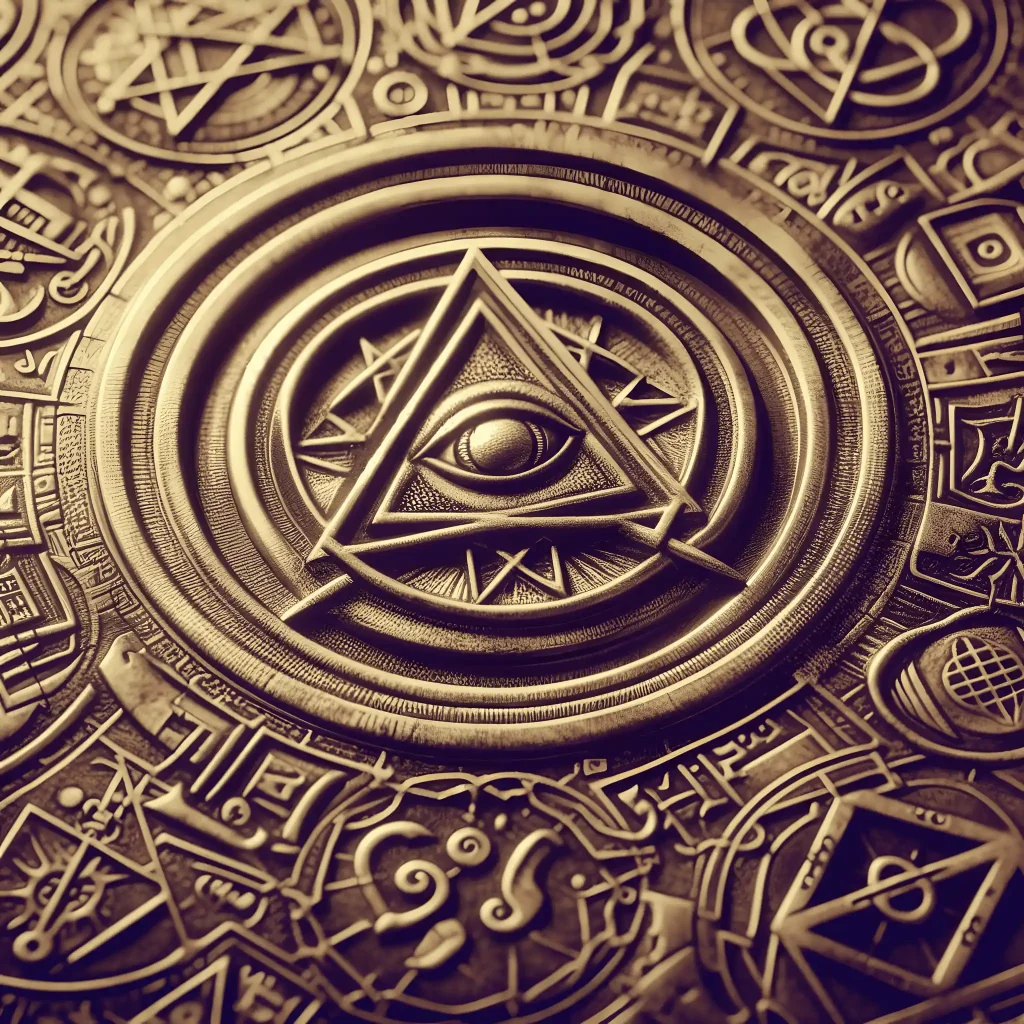
In the digital era, the once obscured pathways to occult knowledge have become illuminated by the omnipresent glow of screens. The modern landscape of occult societies is a paradoxical blend of increased visibility and enduring secrecy. While the internet has democratized access to information about these esoteric groups, the core experiences and higher teachings of these societies remain guarded, shared only with those who have proven their commitment and understanding.
Contemporary occult societies continue to thrive, adapting to the challenges and opportunities presented by an ever-connected world. Some, like the Freemasons and the Rosicrucians, maintain a strong presence with lodges and chapters operating openly, their members participating in both esoteric practices and community service, preserving the balance between the inner work of the society and its outward expression.
Newer movements have also emerged, such as the Chaos magicians, who combine traditional occult practices with postmodern philosophy. This eclectic and individualistic approach to magic reflects the spirit of the times, where personal experience and adaptability are prized over dogmatic adherence to established systems.
The internet has given rise to a multitude of online communities where individuals can explore and discuss occult topics. These virtual gathering spaces allow for the exchange of ideas and practices across continents, fostering a global network of esoteric practitioners. However, this accessibility also raises questions about the dilution of tradition and the potential misinterpretation of teachings that were once closely held secrets.
Despite the increased openness, modern occult societies still value discretion and the gradual unfolding of deeper knowledge. Initiation remains a key component of many groups, symbolizing the aspirant’s readiness to embark on the transformative journey of self-discovery. These initiation rites often incorporate traditional elements, preserving the link to the society’s historical roots while also evolving to remain relevant in the contemporary world.
The influence of modern occult societies can be subtle yet pervasive, with their symbols and ideologies infiltrating fields such as psychology, holistic health, and alternative spirituality. The New Age movement, with its eclectic mix of spiritual practices, owes much to the foundational work of occult societies in popularizing concepts such as the aura, chakras, and the power of intention.
As we consider the role of these secret organizations in today’s world, it becomes clear that their impact is not solely confined to the spiritual or esoteric. The principles and values espoused by these groups often encourage a deeper engagement with the world, prompting members to apply their insights in ways that foster personal growth and collective well-being.
The modern adepts of these societies stand at the vanguard of a new era, where ancient knowledge intersects with contemporary culture. They continue to explore the boundaries of consciousness and reality, seeking to understand and utilize the unseen forces that influence our lives. This pursuit often leads to innovative ideas that contribute to various fields, from the arts to the sciences, demonstrating that the work of these societies is as much about external innovation as it is about internal exploration.
In the realm of environmentalism and social justice, for example, the philosophies of interconnectedness and unity that many occult societies hold dear are finding expression in movements that advocate for a more harmonious relationship between humanity and the Earth. Members of these societies may not only engage in ritual and study but also take active roles in promoting sustainability and equity, seeing such work as an extension of their spiritual values.
The challenges faced by modern occult societies are unique to our time. The proliferation of misinformation and the commodification of the esoteric can sometimes overshadow genuine spiritual practice. In response, these groups often emphasize discernment and a grounding in tradition to navigate the information age’s choppy waters. They aim to preserve the sanctity of their teachings while also remaining open to the evolution of thought required by an ever-changing world.
Despite—or perhaps because of—the skepticism and scrutiny they face, modern occult societies persist in their quest for the esoteric. They remain a testament to the timeless human desire for deeper understanding and the transformative power of the unseen. As keepers of ancient wisdom in a modern age, these societies challenge us to look beyond the surface and to consider the profound implications of our place in the cosmos.
Unraveling the Myths: Theories and Conspiracies Surrounding Esoteric Groups
Separating Fact from Fiction in the World of Secret Societies

The clandestine nature of occult societies, with their veiled rituals and secretive memberships, has inevitably led to a labyrinth of theories and conspiracies. In this shadowy realm, where fact and speculation intertwine, the line between reality and myth becomes as elusive as the societies themselves.
Conspiracy theories concerning occult societies have woven their way through the fabric of public discourse for centuries. These narratives often portray secret organizations as omnipotent puppet masters, orchestrating global events from the dimly lit backrooms of power. Groups like the Illuminati and the Freemasons are frequent subjects of such theories, with claims that they hold the reins of government, finance, and media, shaping the course of history to serve their mysterious agendas.
The allure of these theories is undeniable; they offer a seductive simplicity in a complex world. The idea that a single entity could hold sway over the multifaceted tapestry of global affairs provides a straightforward answer to the chaos of existence. However, the reality of occult societies is far more nuanced. While it’s true that these groups have had influential members and have played roles in historical events, the extent of their power is often exaggerated by the sensationalist nature of conspiracy thinking.
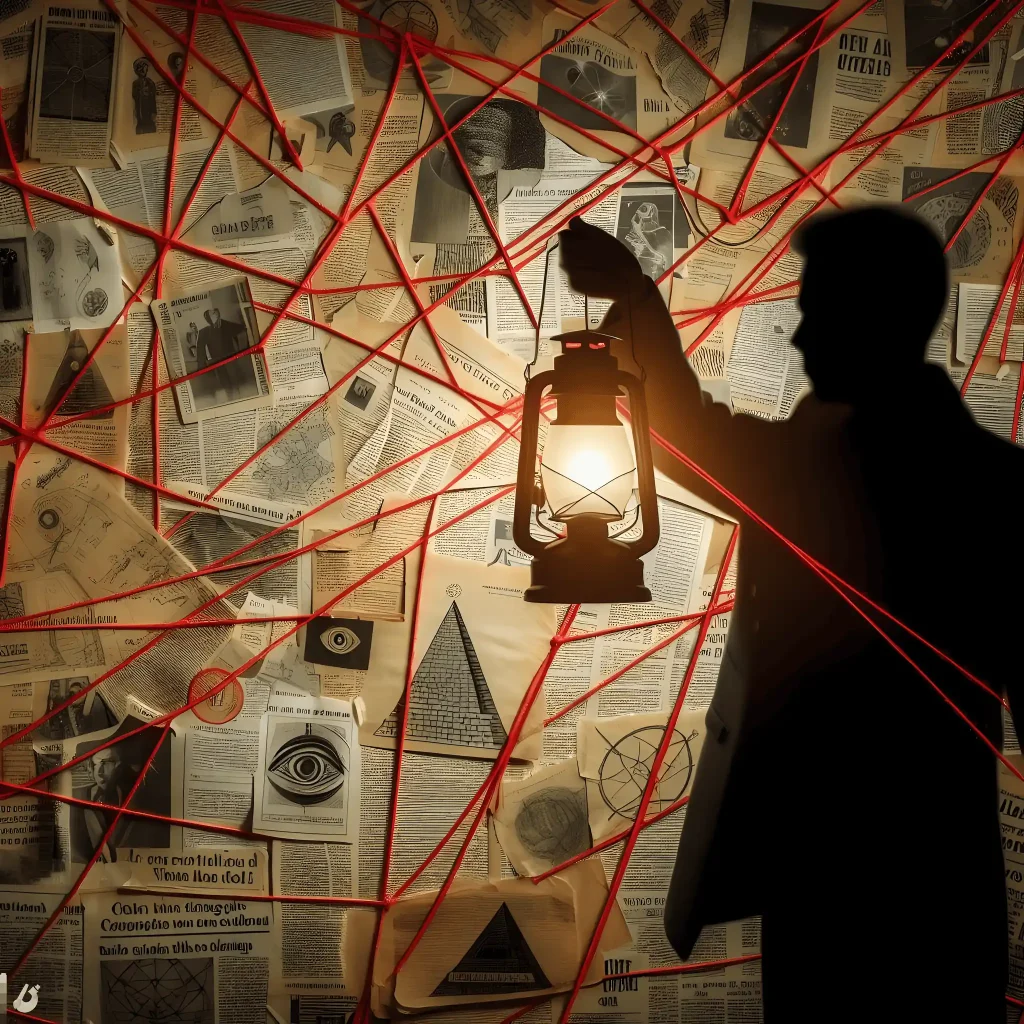
Amidst the mire of conjecture, there are also genuine concerns and critiques regarding the influence of esoteric groups. Transparency and accountability are valid expectations in any organization, and occult societies are no exception. It’s crucial to discern between legitimate inquiries into the activities of these groups and the unfounded narratives that cloud the waters of understanding.
The proliferation of conspiracy theories has been fueled by the digital age, where information—and misinformation—spreads with viral efficiency. The internet has become a breeding ground for rumors and false claims about occult societies, often amplified by their depiction in popular culture. The challenge lies in separating the kernels of truth from the chaff of fabrication, a task that requires critical thinking and a willingness to question one’s preconceptions.
It’s essential to recognize that the human fascination with the occult and the conspiratorial often stems from a deeper place—a place of curiosity, fear, and the desire to make sense of the world. Occult societies, with their rich histories and complex symbolism, are ripe for such projections. They become the screens upon which we cast our collective anxieties and hopes.
In dissecting the web of theories and conspiracies surrounding occult societies, we must approach with a balanced perspective. Acknowledging the historical impact and cultural significance of these groups is just as important as sifting through the layers of hyperbole that have built up around them over the years. To navigate this domain, we must arm ourselves with research, rationality, and a healthy dose of skepticism.
Conspiracy theories, while often lacking in verifiable evidence, can have real-world consequences. They can foster distrust, division, and even incite violence. Therefore, it is the responsibility of both the public and the members of these societies to engage in open dialogue where possible, to demystify their practices, and to dispel unfounded fears.
Furthermore, it’s important to understand the psychological underpinnings of why such theories take root. In times of social and political upheaval, when the world feels increasingly unpredictable, conspiracy theories can provide an illusion of control and order. They offer a narrative in which there is a clear cause and effect, and in doing so, they simplify the bewildering complexity of global events.
Occult societies, by virtue of their emphasis on hidden knowledge and transformative insights, can also be seen as metaphors for the human quest for deeper understanding. They challenge individuals to look beyond the surface, to question established narratives, and to seek a greater truth. This philosophical stance, while enriching, can also make these societies susceptible to being cast as the villains in simplistic conspiracy narratives.
As we examine the various theories and conspiracies, we must also consider the context in which they arise. Historical events, cultural shifts, and the rise and fall of public figures can all contribute to the narrative surrounding these societies. The stories we tell about occult groups are as much a reflection of our cultural psyche as they are of the societies themselves.
In the final analysis, the world of occult societies is a microcosm of the broader human experience, replete with mystery, complexity, and the search for meaning. While theories and conspiracies will likely continue to swirl around these enigmatic groups, it is through a measured and inquisitive approach that we can begin to unravel the threads of truth woven into the tapestry of speculation.
Ultimately, the study of occult societies and the theories that surround them is not just an exploration of the groups themselves, but a journey into the heart of human nature. It is a reminder that our longing for understanding, our fear of the unknown, and our capacity for imagination are inexorably linked to the narratives we construct about the world around us. By exploring these narratives with care and discernment, we can move closer to a nuanced appreciation of the secret societies that have, for better or worse, captured the human imagination across the ages.
In this journey, it is critical to not lose sight of the distinction between healthy skepticism and the descent into cynicism. Occult societies, much like any subject of historical and cultural significance, deserve to be studied with an objective eye. We must allow for the possibility that these organizations are neither omniscient cabals nor purely benign assemblies but complex institutions with varied individuals and intentions.
As we peel away the layers of intrigue, we often find that the most profound truths about occult societies are not hidden in shadowy corners but are out in the open, woven into the very fabric of our shared human story. These societies have been a part of philosophical debates, scientific advancements, and the evolution of artistic expression. They have influenced the development of new ways of thinking and contributed to the diversity of spiritual practices that enrich our global culture.
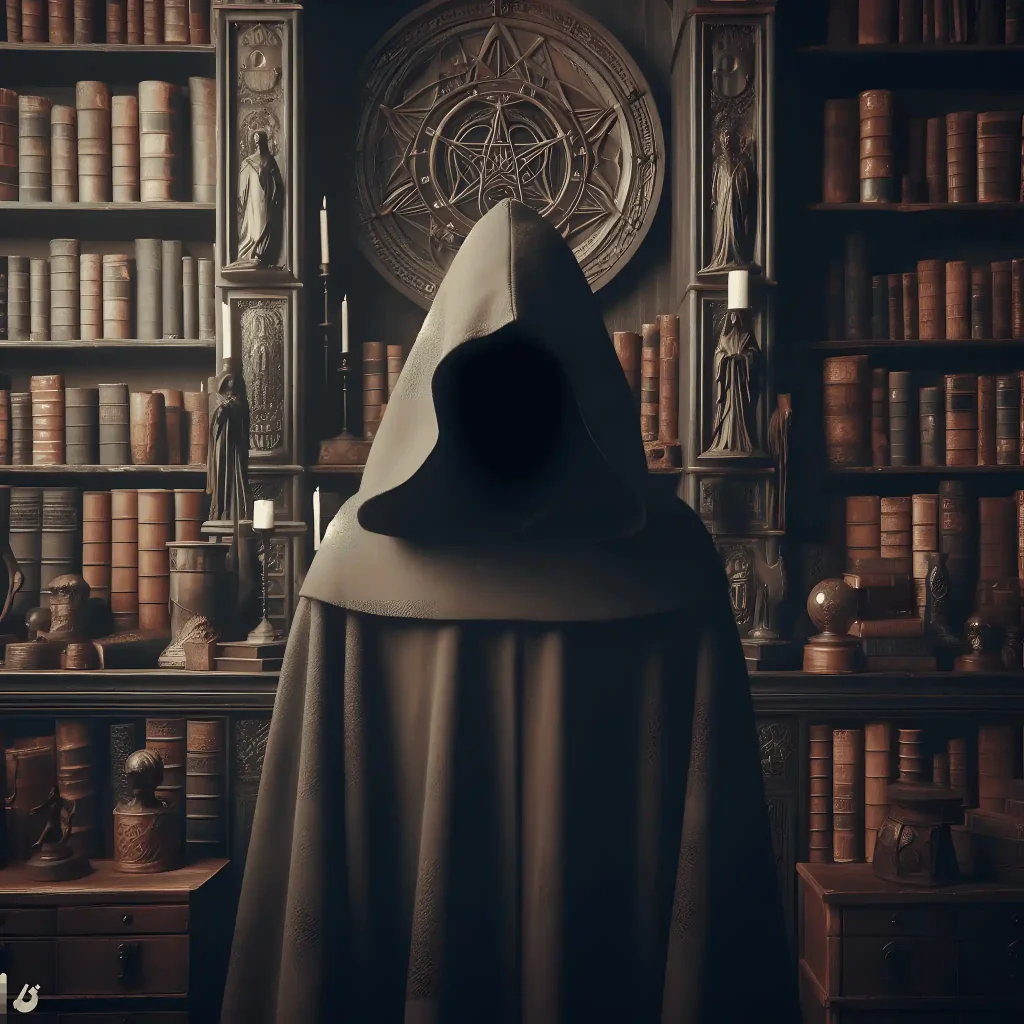
The task before us, then, is to engage with the subject of occult societies with a spirit of inquiry and a willingness to understand the multifaceted roles they have played—and continue to play—in shaping our world. This means examining historical records, scrutinizing contemporary accounts, and, perhaps most importantly, engaging with the living traditions and individuals who carry on the legacies of these groups.
In conclusion, the theories and conspiracies that surround occult societies serve as a mirror reflecting our collective concerns and aspirations. They challenge us to confront our fears, to question our assumptions, and to broaden our understanding of the hidden forces that may shape our reality. As we navigate through the labyrinth of speculation, we are reminded that the search for truth is a journey that is as much about the questions we ask as the answers we find. It is a journey that calls for both courage and compassion, for the willingness to explore the unknown and the wisdom to recognize the common humanity that binds us all in the quest for knowledge and understanding.
The Enduring Enigma of Occult Societies
Reflecting on the Legacy and Continuing Mystery of Secret Organizations
As we stand at the threshold of the known and the unknown, the journey through the secret world of occult societies reaches a crossroads. We have traversed the shadowed hallways of history, peered into the private chambers where rituals are whispered, and walked in the footsteps of the influential figures who have shaped the narrative of these enigmatic groups. We have felt the pulse of their influence in the beating heart of popular culture and grappled with the tangled web of theories and conspiracies that surround them.
The world of occult societies is a rich tapestry, interlaced with threads of mystery, wisdom, and the unending human quest for deeper understanding. These societies remind us that beyond the veil of our everyday reality lies a vast expanse of potential—a realm where the spiritual and the intellectual converge, where the search for truth becomes a transformative journey.
As we close this chapter, let us not forget that the story of occult societies is an ongoing one, written by those who dare to delve into the depths of the arcane. It is a narrative that continues to evolve, inviting each of us to play a part in its unfolding.
Now, dear reader, the quill passes to you. Share your voice in this grand and mysterious conversation. Have you encountered the shadowy influence of these secret organizations in your own life? Do their symbols and stories resonate with you, or do they evoke skepticism? Have you delved into their histories, or do you find their presence in popular culture more compelling?
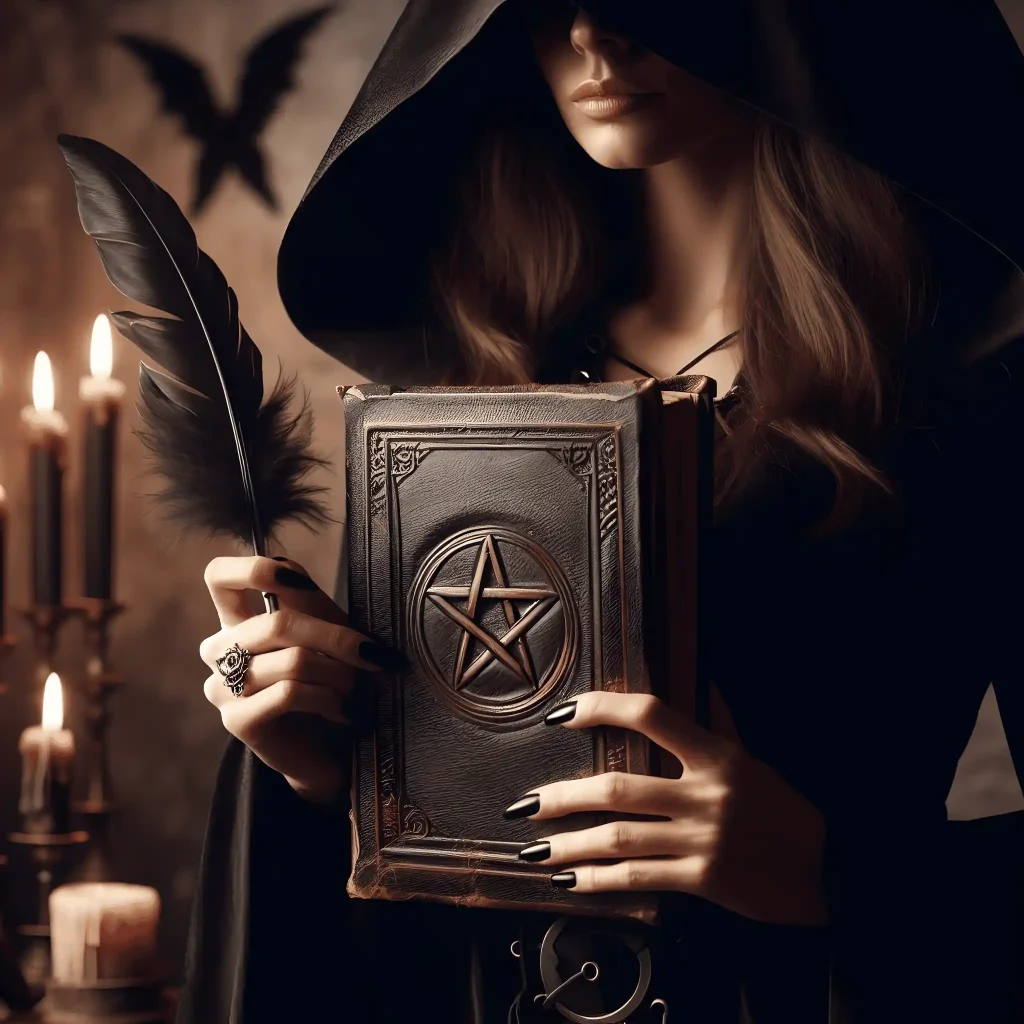
I invite you to leave a comment below with your thoughts, experiences, or any insights you may have on occult societies. Whether you are a seasoned adept or a curious newcomer to the world of the esoteric, your perspective is a valuable addition to the rich dialogue that surrounds these secret organizations.
Join the discourse, contribute your piece to the puzzle, and help us continue to explore the enigmatic legacy of the world’s most mysterious societies. Your insights not only enrich our collective understanding but also ensure that the search for knowledge remains a shared and dynamic journey.

